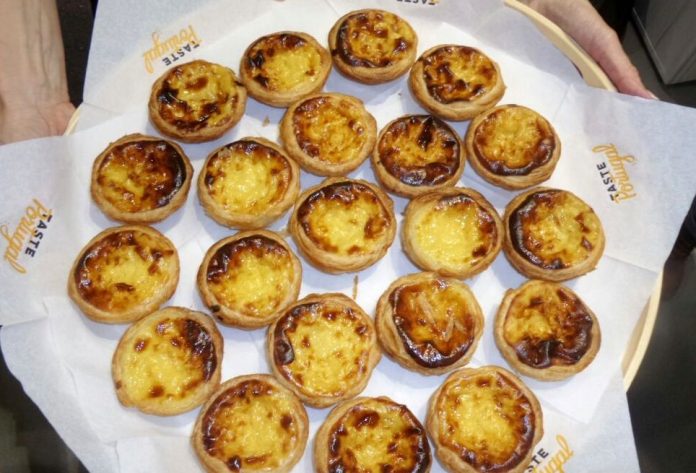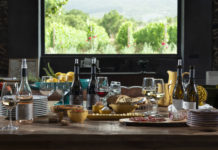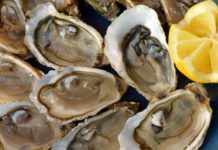
Porto, Portugal; Berlin, Germany (Gastrosofie). Pastéis? Pastéis de Nata! Never heard of and never tasted? Then it’s high time. These famous puff pastry tartlets that guest workers took along to the German speaking countries with the Galão in the middle of last century, yes even to Luxembourg, shine as if they were the sun of the south and are certainly pure hip gold. But they are so delicious that we can’t resist. Suppose you can’t either.
And not only a mouthful, no, we can’t get enough of these sweet, classic small cakes, that connoisseurs call Pastéis in short, which means nothing more than pate, while academics stick to the full name Pastéis de Nata. The Nata bit of the bite is the cream.
Whereas the Galão, this typical Portuguese espresso with milk stays short, strong and without additives. Except sugar – also needed for the preparation of this Portuguese prominent pastry.
The ingredients
for a dozen Pastéis de Nata start with the fat for the mold. If you do not have a special form, you can use muffin forms (12er), which are also suitable.
Puff pastry
225 grams (g) of frozen puff pastry
Filling
30 g starch of corn
500 ml of milk from cows that are allowed to graze in the pasture
1 vanilla pod and no substitute stuff
150 g of sugar, pure white consumption sugar of highest quality.
6 yolks at least of size M
The preparation
Thaw the puff pastry sheets according to the package instructions. Grease the mold and preheat the oven (top / bottom heat: approx. 250 ° Celsius, hot air: approx. 230 ° Celsius).
For the filling mix the starch of corn with about 5 tablespoons of milk. Slice the vanilla pod lengthwise and scrape out the pith. Mix the corn flour with the remaining milk, sugar, pulp of vanilla and egg yolk in a saucepan with a whisk and bring it to boil, stirring constantly. Boil briefly, then let it cool in peace. Now and then stirring can’t be wrong when cooling down. Don’t forget to try!
When cooling down, lay the puff pastry sheets over each other and roll them out on a lightly floured work surface to a rectangle of around 30 x 20 cm. Then roll up the plate from the short side and cut the roll into 12 even slices. Then roll out the dough slices in succession on a lightly floured work surface to make thaler treats with a diameter of 10 cm and fill the mold with it. Distribute the cream evenly into the deep valley of the ex-thalers. Now the mold just has to go into the oven, preferably in the middle.
A dozen Pastéis de Nata require a dozen minutes of baking time in the preheated oven. In the darn thirteenth minute, get the vanilla tartlets out and let them cool down a bit, so that one does not burn their fingers when they come out of the molds. We like them best lukewarm with Galão.
Manteigaria – Fábrica de Pasteis de Nata in Porto
In Porto we recently tasted at the end of a Taste Portugal tour in front of our eyes freshly prepared Pastéis de Nata in Manteigaria – Fábrica de Pasteis de Nata, Rua Alexandre Braga, 2, 4000-049 Porto, Portugal. In the well-thought-out restaurant with high ceilings situated on the ground floor of a house corner of Rua Formosa, all sorts of coffees are also served. Especially young people seem to feel comfortable here.
Bekarei in Berlin
And a few houses away from the editorial office in the Bekarei, Dunckerstaße 23, 10437 Berlin, our favourite dish is called Pastel de Nata. This Bekarei was founded 2006 by Paula Gouveia and George Andreadis, at a location having a more than 120-year tradition as a bakery. But the story of Pastéis de Nata is much older. How old? Nobody knows that exactly. But at least now you know exactly how to produce phenomenal Portuguese pastry!
Christopher Prescott, text based on an article by Ole Bolle.










